If you own a business, you know your target market heavily influences your product and marketing decisions.
If you don’t reach the right market, you risk not making a good return on investment (ROI) and missing other business goals.
In this blog post, we’ll delve into the meaning of target market and provide tips to identify the right audience for your needs. Then, we’ll show you how to integrate your chosen audience successfully into your marketing campaigns to maximize their impact.
What Is a Target Market?
The definition of target market is simply the group of people your product serves. It takes into consideration key characteristics such as age, income levels, lifestyle, state of mind, and other attributes.
Companies define their target market to make product and marketing decisions that potential customers will respond to. The target market plays a vital role in influencing product design, packaging, and advertising.
A target market is not the same as a broad market, which entails entire countries and economies. You could be targeting the German market, but your target market would be much smaller and more specific—like German moms.
It’s also different from a target audience, a subset of a target market that serves a business’s marketing efforts.
For example, advertisers make up one of Facebook’s target markets. Several target audiences exist within that market: small business advertisers, automobile advertisers, advertising agencies, and more.
What’s the Purpose of a Target Market?
The main goal of a target market is to understand who your product is for. It also guides you in creating and offering a product that will sell.
Let’s take anti-aging cream as an example. There are so many varieties because brands want to appeal to different markets.
Estée Lauder sells its Re-Nutriv Ultra Diamond Transformative Energy Crème for $435. The product contains black diamond truffle extract and 24-carat gold South Sea pearls. Its target market has disposable income and is interested in a luxury experience.
OSEA’s vegan, cruelty-free, and sustainably packaged Anti-Aging Balm, retailing for $84, targets a market concerned with environmental safety.
Lastly, Olay’s Retinol 24 ***** Face Moisturizer retails for $29.99 at most pharmacies. Seeking to attract a market that is mindful of cost and convenience.
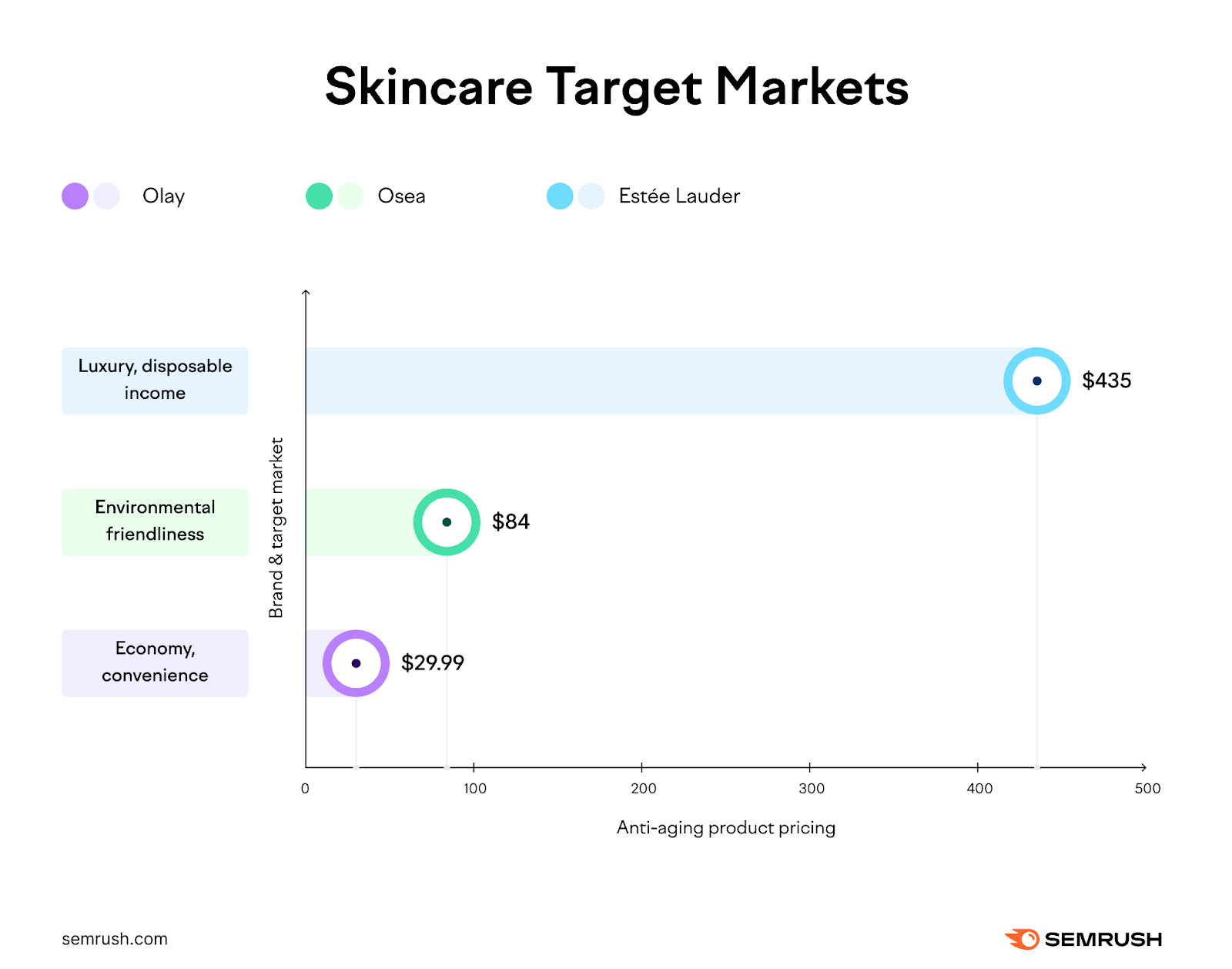
Each cream option signals to certain customers that they’ve found the right product for them. The brands behind them assess their target market’s needs to make smarter decisions, hoping to sell more stock.
How to Identify Your Target Market
Understanding who makes up your target market is an important first step in the process of creating, marketing, and selling your product or service. In this section, we explore key ways to learn who your target market is.
Most products don’t appeal to everyone—unless you’re selling water. And even then, you could argue that different water products serve different markets.
If you start with a broader target market like water, you’ll eventually have to get more specific.
Water drinkers filling up a reusable bottle from the tap are a different target market from those who buy bottles of Essentia or smartwater. They’re all water drinkers, but the former may be more concerned with the environmental impact of their choices.
Getting feedback from customers, analyzing data on market trends, and observing what competitors do can help you find your target market. Let’s explore why and how.
Interview Your Current Customers
If you already sell products, your first stop should be to interview your current customers. Survey them or conduct personal interviews to discover who they are and why they purchase your brand.
Ask your customers questions like:
- What problem does my product solve for you?
- What’s your favorite part of my product?
- What would make my product even better?
- What is a reasonable price range for the perfect product in this category?
- Why did you choose to buy my product at this time?
- Would you buy my product again? Why or why not?
If contacting your customers directly isn’t possible, start with your customer service and sales teams. Ask them questions about customers they’ve lost—this will often give you more insights than asking why customers are happy.
Collect Market Data and Analyze Competitors
Quickly get to know your potential customers by observing what’s working for your direct competitors and within your industry or niche.
How?
Semrush’s Market Explorer lets you collect market data as well as conduct a competitive analysis.
Navigate to the left-hand side of the tool dashboard and select “Market Explorer” under the “.Trends” drop-down.
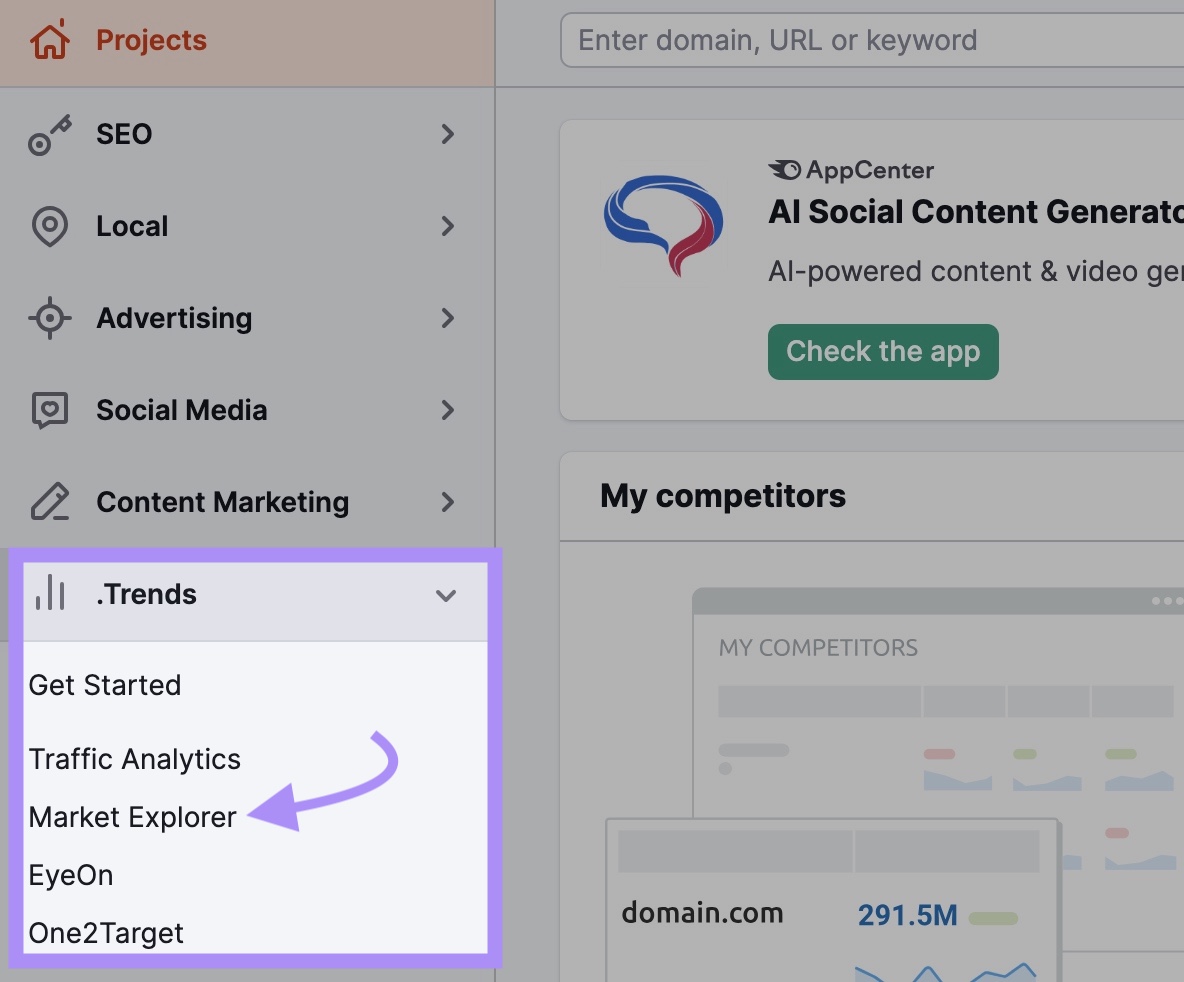
Here, you’ll be able to analyze specific competitive URLs, identify your main market contenders, and gain insights into an entire business category.
In the example below, we selected “Analyze Category,” followed by “United States” from the “Location” drop-down. Next, we chose “Architecture” from the “Business Category” drop-down, then clicked “Research a market” to get an overview.

You can see that at the time of our analysis, architecture has no major dominating players, so “Market Consolidation” is low.
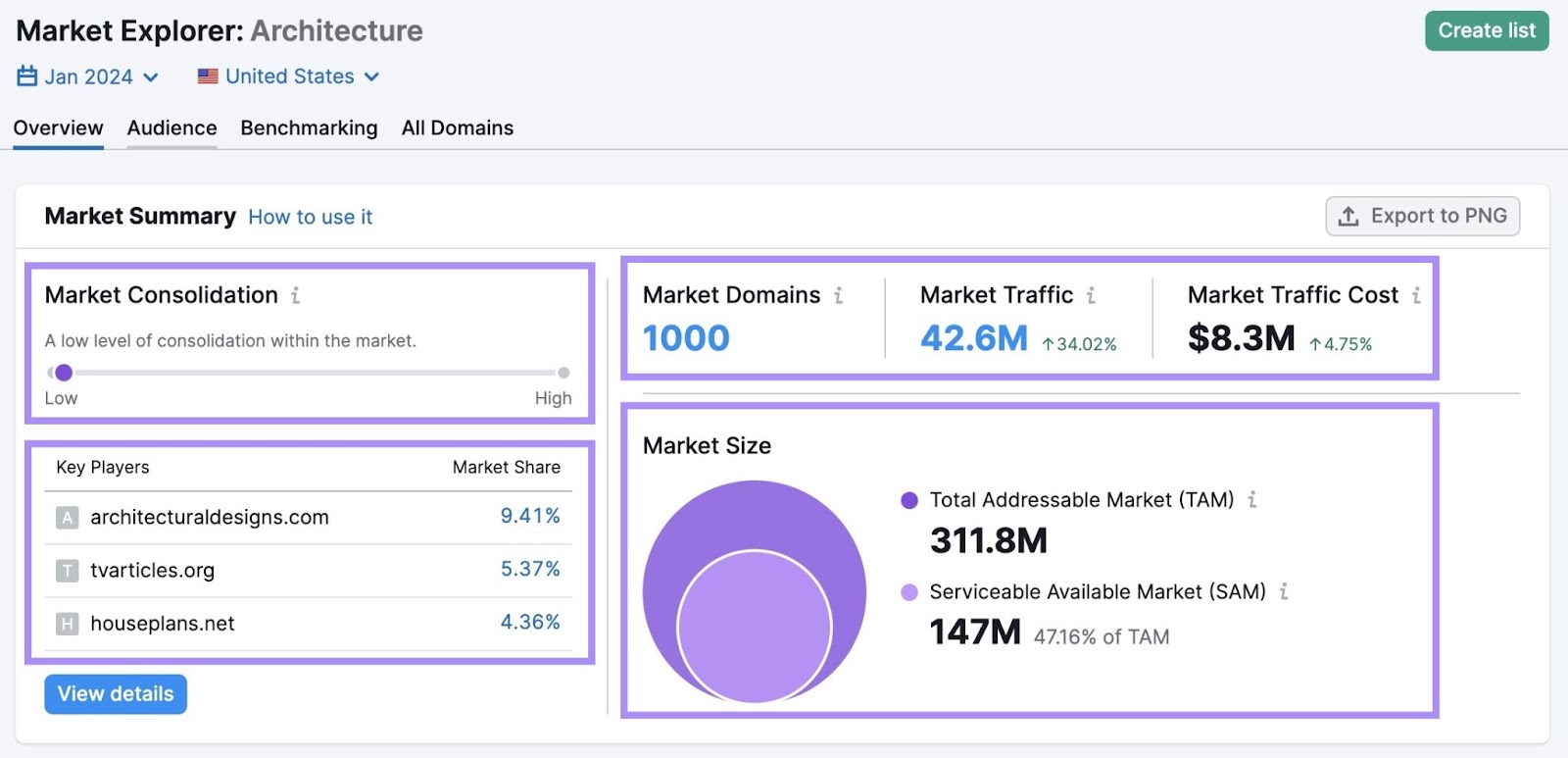
You also learn that the architecture market has 1,000 domains getting 42.6 million monthly visits—worth $8.3 million in search ads.
Demand for an architectural product (“Total Addressable Market”) amounts to 311.8 million people, but only 147 million are realistically ready to purchase (“Serviceable Available Market”).
For more details on the above data points, select the “Audience” tab from the top menu. You’ll get a summary of the demographics, socioeconomics, behavior, interests, and more.
These insights can help you decide how to price your products around your potential customers. And which marketing channels are worth your time.
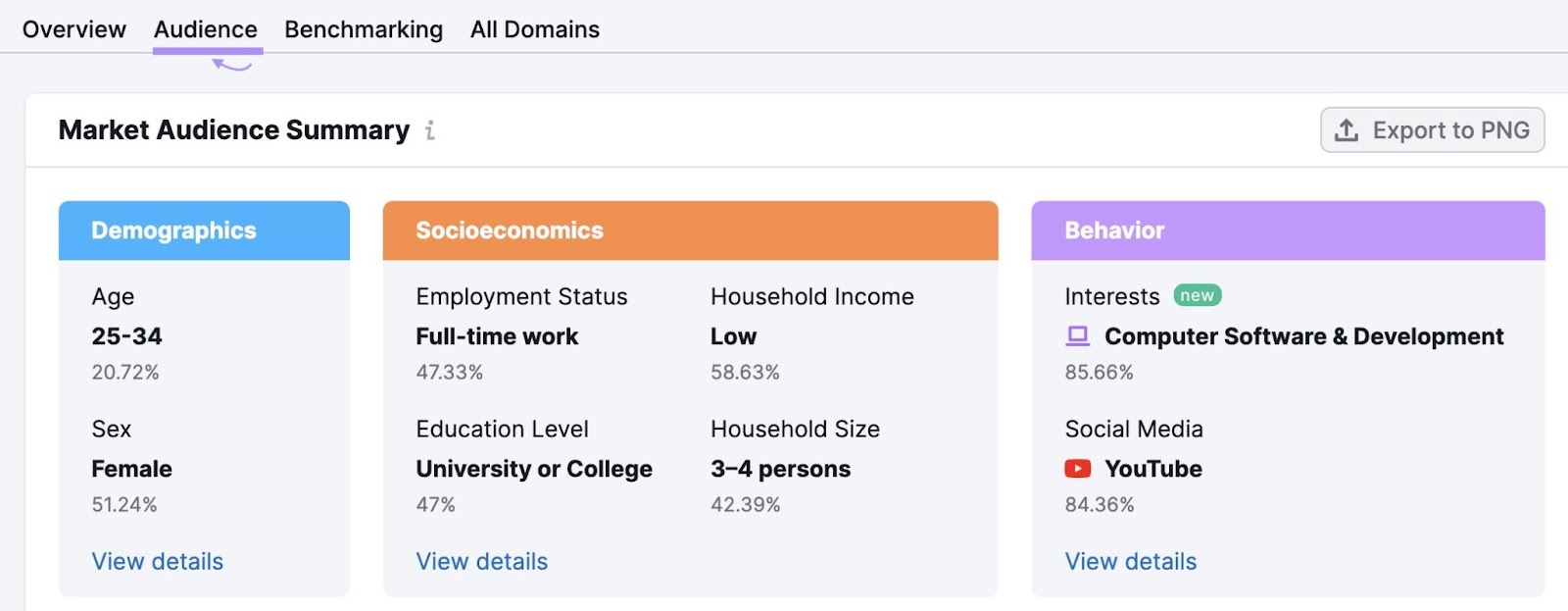
For instance, knowing that over 84% of your target audience watches YouTube might lead you to consider running ads or amping up your organic posting on the platform.
Once you’ve identified your target market, segmentation is the next logical step. You want actionable insights that you can incorporate in later campaigns, and those come from further researching subsets of your target market.
Tips for Effective Target Market Segmentation
Segmenting your target market can inform different marketing campaigns you create for the same product.
Take FitBit Charge, with a target market concerned about health and physical performance. That could mean something entirely different for a cyclist and a swimmer.
Swimmers might respond well to a marketing campaign focusing on FitBit being waterproof. A cyclist is likely more interested in the product’s speed accuracy.
Use the following six criteria to identify and segment your niche market.
Geographic Segmentation
Where people live can impact your marketing efforts or business decisions—particularly climate, language, and regional preferences.
Let’s look back at our architecture example. The “Market Geo Distribution” section under the “Overview” tab in Market Explorer shows that the US has the biggest architecture market by far.
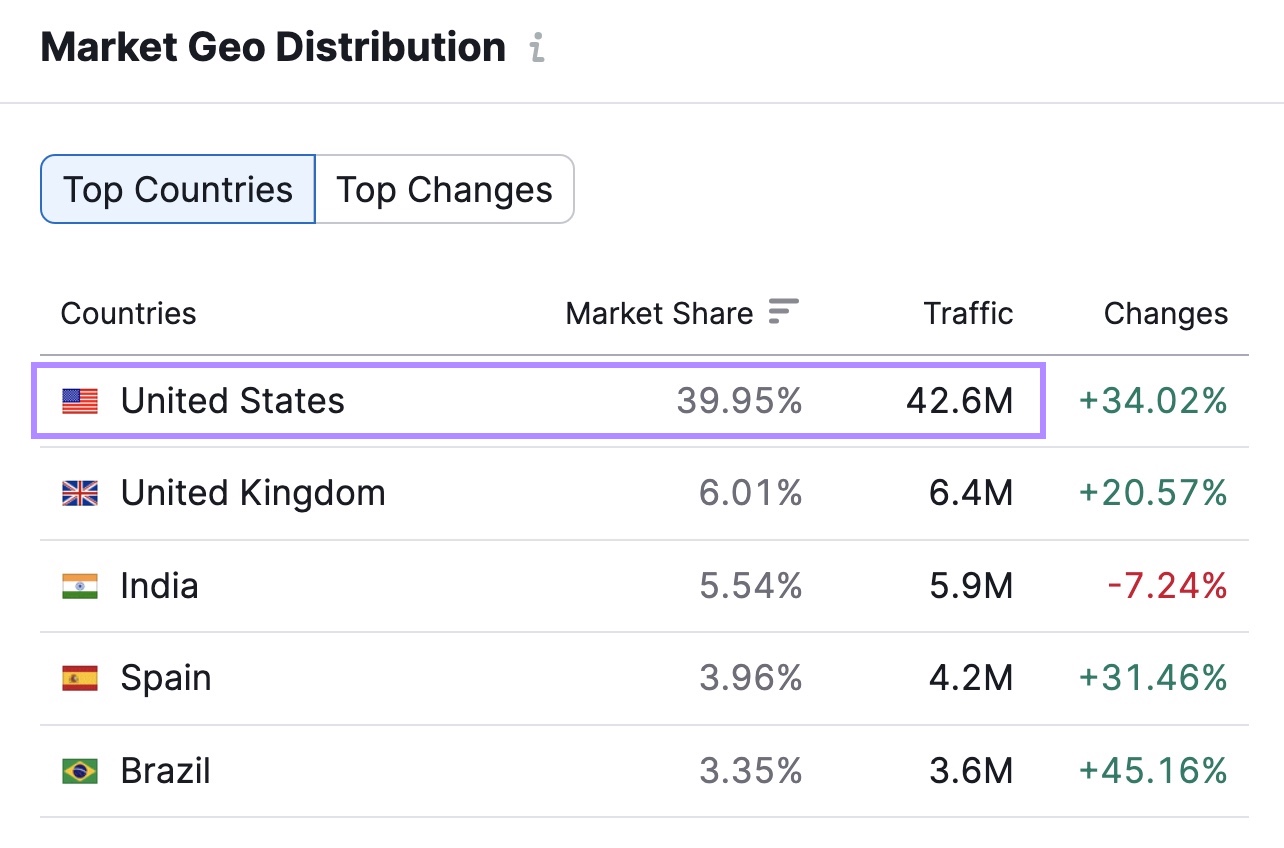
Switch to “Top Changes” to see which countries have the fastest-growing architecture markets.
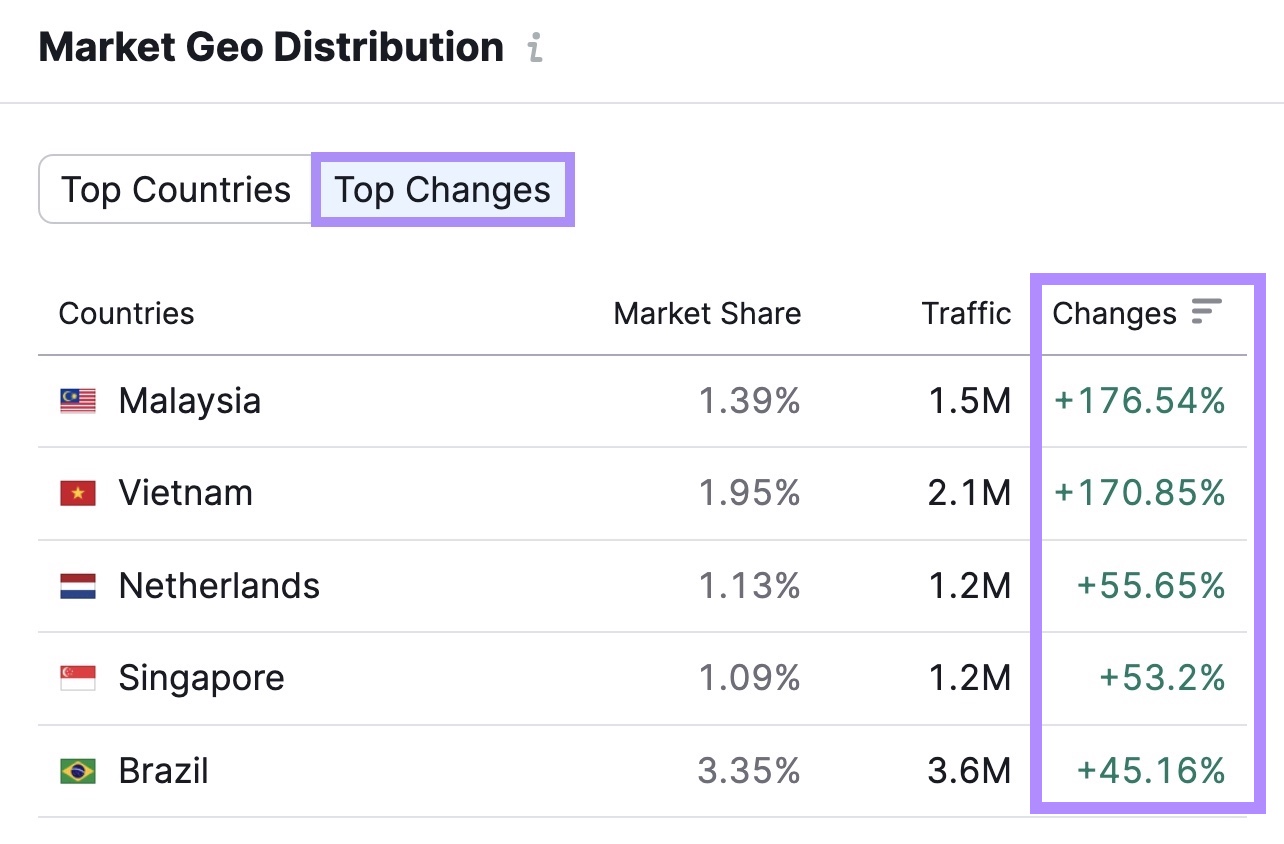
Fast-growing markets could be a good opportunity if you want to expand your business internationally and sell your products successfully.
Demographic Segmentation
Demographic segmentation includes attributes such as age, gender, income, marital status, education level, family status, occupation, sexual orientation, ethnicity, and household size.
In our architecture example, employment data under “Audience” reveals an opportunity to target students separately from those already working in the field.
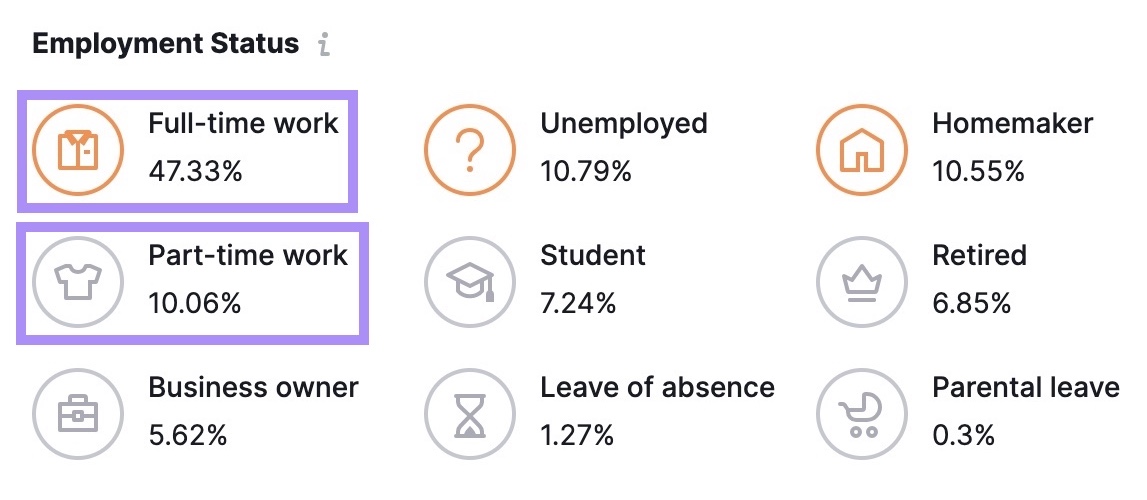
Why?
Almost half the target market is already pursuing full-time work, whereas students represent a much smaller subset. Trying to craft a single message that addresses them both would likely make it irrelevant for either group, who are in very different places in their career.
Also, 58.63% of the market falls under a low household income, and more than 64% supports at least three people—valuable information when pricing your products.
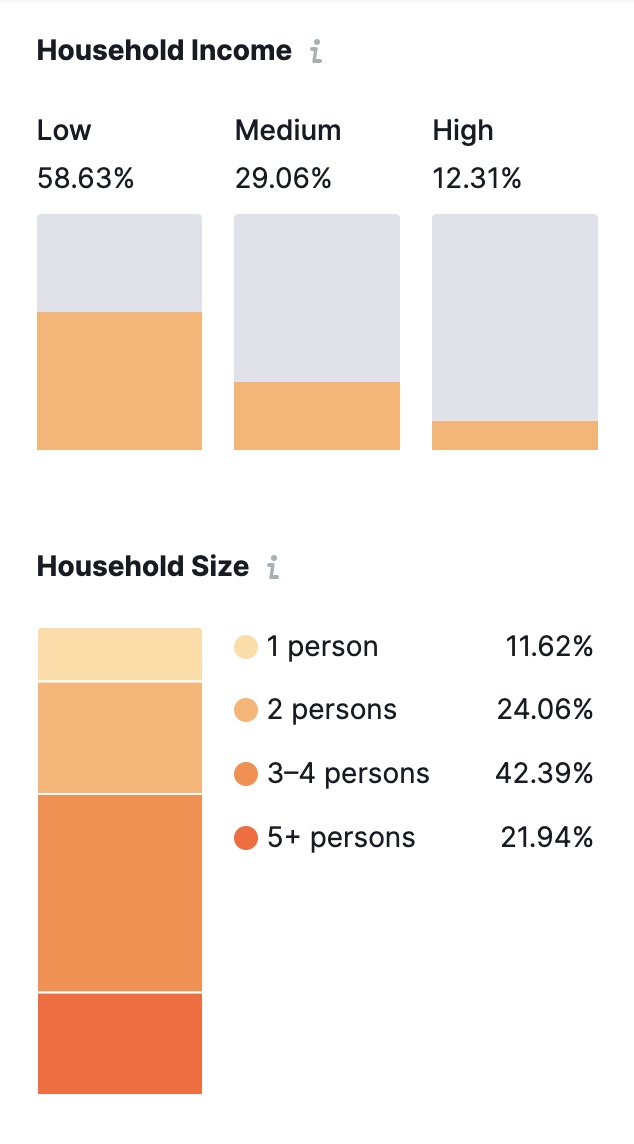
Firmographic Segmentation
Firmographics are demographics for businesses that provide insights into industry, location, business size, status, performance, and more.
They’re specifically important for business-to-business (B2B) companies as they enable targeted marketing strategies and informed decision-making.
Further reading: B2B Content Marketing: What It Is & How to Do It
Most of this information is publicly available on business websites, social media, or press releases.
Browsing the About Us page of one big player in the architecture market, Architectural Designs, you’ll find that the business involves “over 200 architects and designers.”
A quick look at its LinkedIn page reveals that most of the architects work as contractors on specific projects.
With this information, you can identify the demographics of this business as consisting mostly of contracted architects, not necessarily full-time employees.
Behavioral Segmentation
Behavioral segmentation considers customer habits. And can provide insights into how often customers purchase and use your products, why they purchase, and their loyalty to your brand.
The best way to segment your target market by behavior is to survey your current customers or conduct interviews to find major distinctions between buyers.
Using this data, your brand can tailor its marketing strategies, develop personalized experiences, and effectively target various customer segments. Leading to increased customer satisfaction and loyalty.
Psychographic Segmentation
Segment your target market by psychological traits including lifestyles, values, attitudes, beliefs, and interests. Psychographics take demographic segmentation further by focusing on why a particular group makes a purchase.
While you can survey your current and prospective customers to psychologically segment targets, Market Explorer can shed some light on your market’s interests and social media behavior.
Navigate to the “Audience” tab at the top of the Market Explorer page. Scroll down to the “Interests” section to view your audience’s main areas of interest.
Here are our architecture target market’s top five interests:
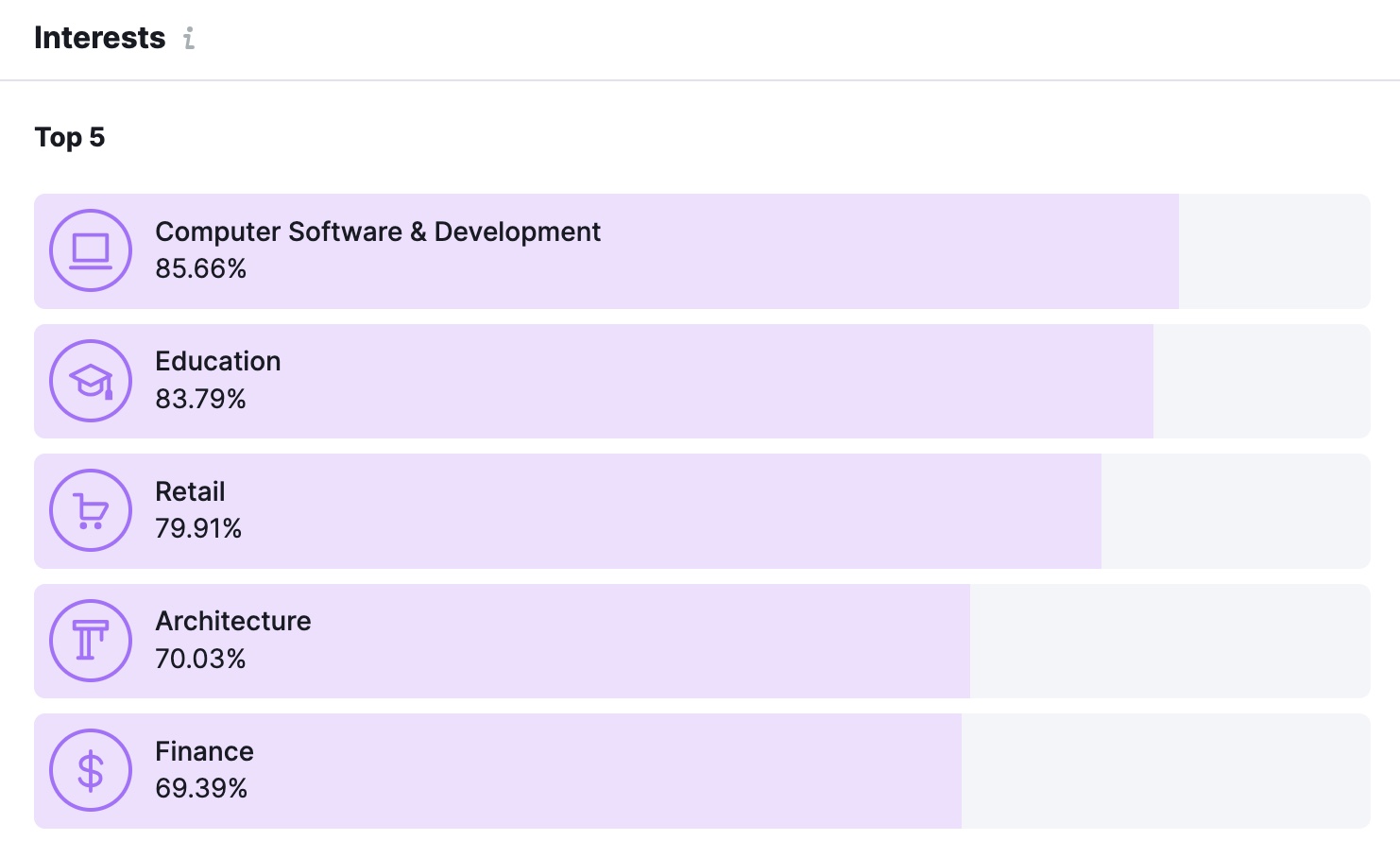
Right below, you’ll see “Social Media” details. According to our architecture analysis, you’re most likely to reach your audience on YouTube. But also with targeted marketing campaigns on Facebook, Reddit, and Instagram.
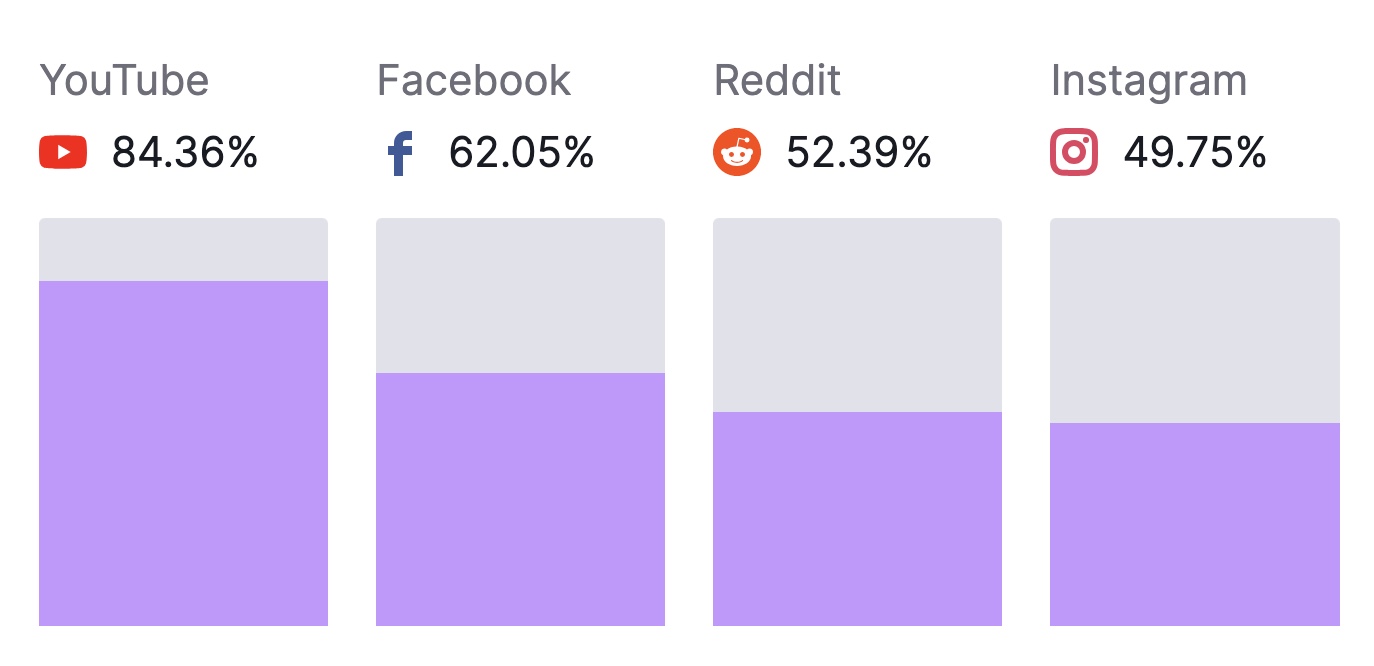
A considerably smaller portion of the architecture market is on Pinterest or TikTok, so you might choose to skip those channels when crafting your marketing strategy.
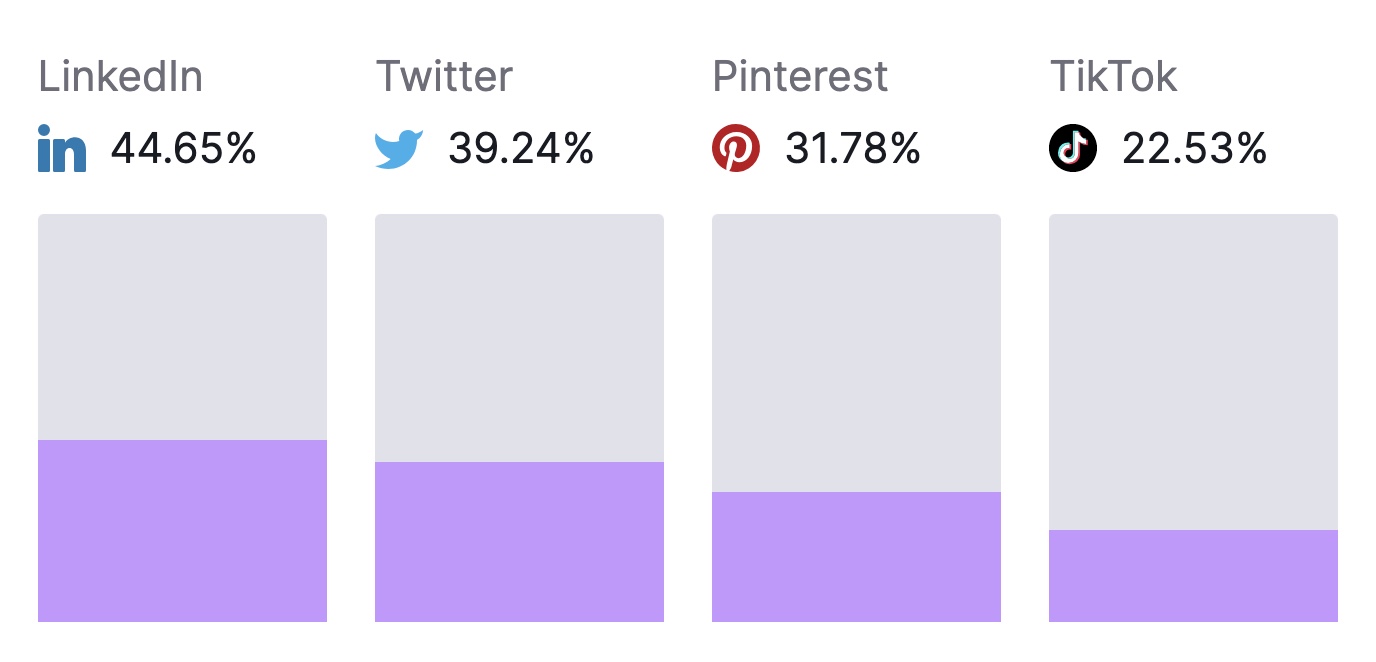
Need-Based Segmentation
Finally, ask: What are my ideal customers seeking to fulfill by purchasing my product? This is how you segment your target market according to their needs.
The best way is to survey or interview your current customers.
Rocky Sharma, CEO of The Procurement School, was curious to know why Taylor Swift fans were willing to spend so much on her shows. So he went to a concert to find out.
I joined the merchandising queue inside the venue to mingle with the fans before the show. Most fans were wearing glittery outfits resembling Taylor Swift and attractive wristbands, with 10 in each hand. They explained to me that these were friendship bracelets that they made at home. I further asked what they do with so many of them. Their answer further surprised me—they trade the wristbands with strangers. This is pure customer delight.
His attendance taught him that Taylor Swift fills so many different needs for her audience that the ticket prices are worth it. She provides a sense of community, support through breakups, the ability to forge new friendships, and so on.
Any of the needs met could be the focus of a marketing campaign targeting Swift’s audience.
Next, let’s look at a couple of examples of specific target markets, and how individual brands or businesses meet their specific needs.
Real-Life Target Market Examples
Chevrolet and Passenger Cars
Here’s some context:
With such a big business, the target market is arguably anyone who needs a passenger car. Chevrolet takes further advantage of the market opportunity by designing different cars to suit various needs.
Sport utility vehicles (SUVs) make up the largest market segment, worth about $275.4 billion in 2024.
Chevrolet has several SUV options to align with such market needs, in addition to producing trucks, sedans, performance vehicles, and electric cars.
Those in the market for an SUV could be families concerned primarily with safety. Meanwhile, Corvette potential buyers are likely more interested in the experience of driving a fast car, or the status that comes with owning a luxury vehicle.
PepsiCo and Beverage Brands
PepsiCo’s revenue for the 12 months ending December 31, 2023 was $91.471 billion. Its 19 different beverage brands command so much revenue as each targets different segments of the market.
Traditional soda brands like Pepsi, Mug Root Beer, and Mountain Dew target those looking for fun, refreshing drinks. Who might not necessarily care about the health benefits of a beverage.
PepsiCo also has brands like Aquafina, Gatorade, Propel, and LIFEWTR. These target athletes looking for a thirst quencher when they’re in the game.
The Starbuck brand allows PepsiCo to target all coffee drinkers—an entire, huge market inviting further segmentation.
Both PepsiCo and Chevrolet use different strategies to signal a product-market fit to their target customers. They apply their target market research findings to fuel their product and marketing campaigns.
Marketing Strategies to Reach Your Target Market
All the work you do to define your target market will guide you to create an effective and profitable marketing strategy for your product.
Your learnings will help you build buyer personas, craft an effective marketing message, choose the right promotional channels, and personalize your campaigns for higher ROI.
Craft a Message to Suit Your Target Market
Now’s the time to develop a written mission statement, define your value proposition, and eventually turn these into copy and visuals for different marketing campaigns. So that you address your audience in a relevant manner each time.
Take Crayola’s mission statement:
Crayola’s mission is to help parents and educators raise creatively-alive kids and the company is dedicated to advancing diversity and inclusion through our products, our people, and by inspiring creativity and self-expression for children and adults around the world.
Based on the above, you’d expect Crayola’s marketing campaigns to include visuals of families and school settings, with diverse people doing creative activities.
A quick look at the features section of Crayola’s classic crayon pack tells you some of the value propositions for the groups it serves: Crayola products are durable, versatile, safe, and non-toxic.
A recent Facebook ad with Ziggy Marley for #CrayolaCreativityWeek showcases how the brand puts its messages into practice.
The campaign content focuses on education and spreading creativity in the world.
Choose the Right Marketing Channels
You might be running to get your brand on TikTok because it’s all the rage these days. But the platform might not be where your market spends its time.
Let’s see which channels work best for a competitor like Crayola using Semrush’s Traffic Analytics.
Select “Traffic Analytics” from the “SEO” > “Competitive Research” drop-down or the “.Trends” menu on your Semrush dashboard.
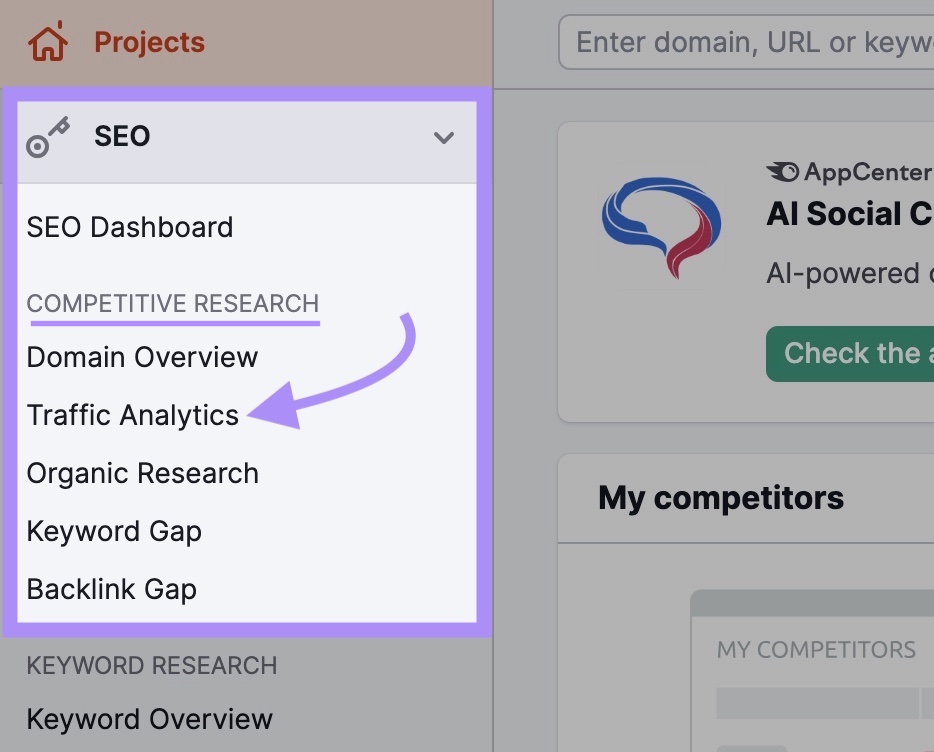
Select the “Check Competitors” option, enter up to five URLs, and click “Analyze.”

Scroll down to “Traffic Channels by Type” to see a list of channels driving traffic to the Crayola site. Choose the period you want to analyze—below, we selected “Last 1 year.”
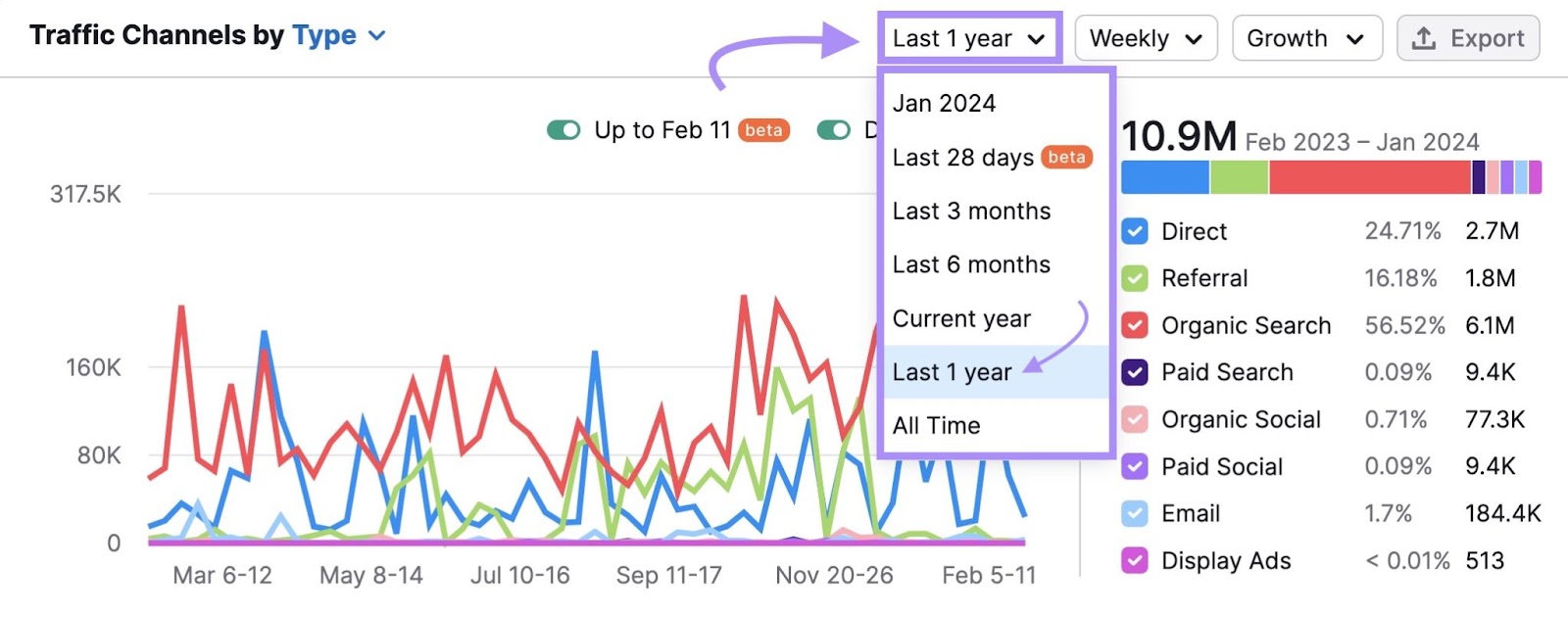
You can see that crayola.com received most of its traffic from organic search. Referrals and direct traffic also had a considerable impact.
If you’re in the children’s art supplies game, focusing on search traffic will be an important place to start.
Let’s take it a step further: a target market analysis in One2Target to see which social channels would be most effective.
Select “One2Target” under “.Trends.” If you’re immediately going from “Traffic Analytics” to “One2Target,” your competitors will show up automatically.
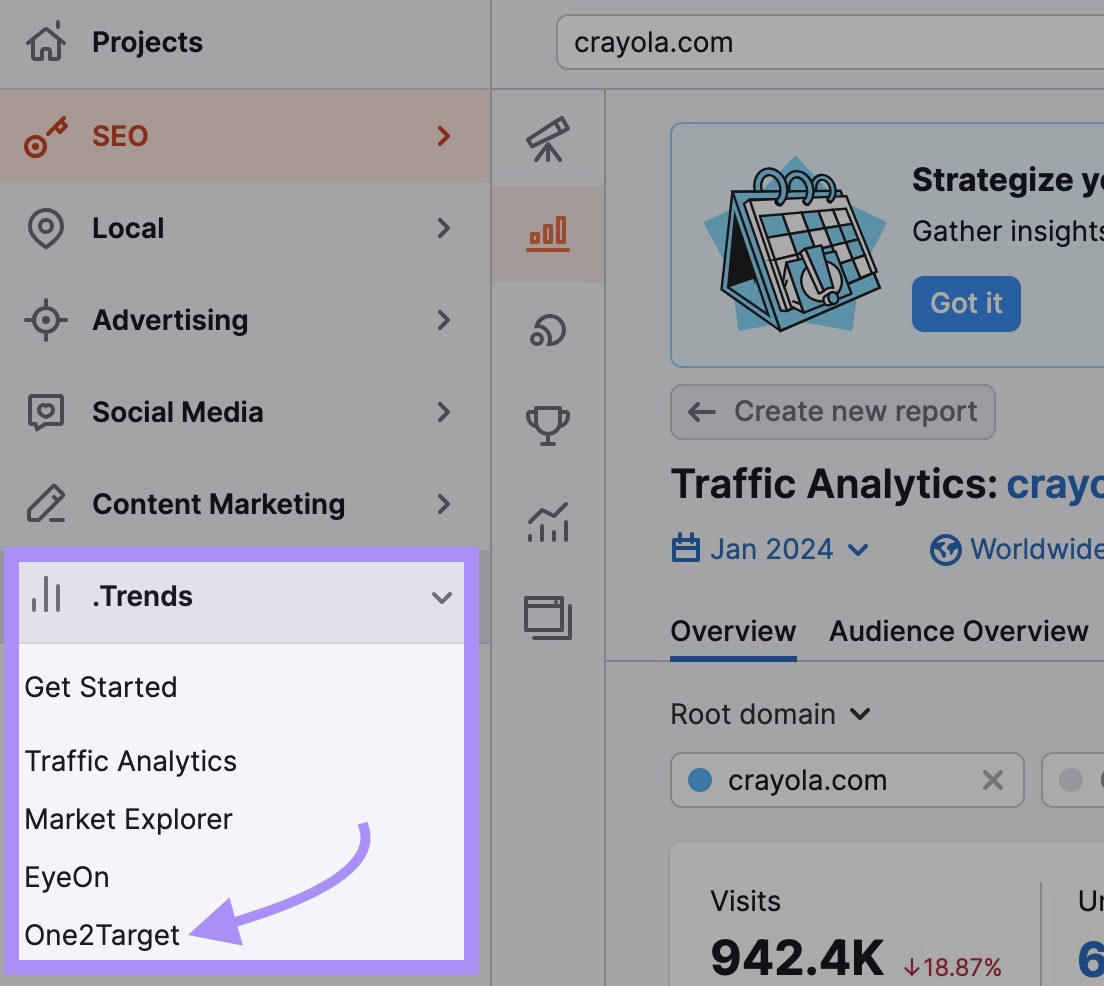
If not, you will need to toggle to “Check Competitors.”
Select the U.S. as your specific target “Location.” Type “crayola.com” in the “Competitors” text box, then hit your Enter or Tab key followed by the “Analyze” button.

You’ll get an overview of your competitor’s audience, including demographics, socioeconomics, and behavior. Plus audience overlap when you enter multiple URLs.
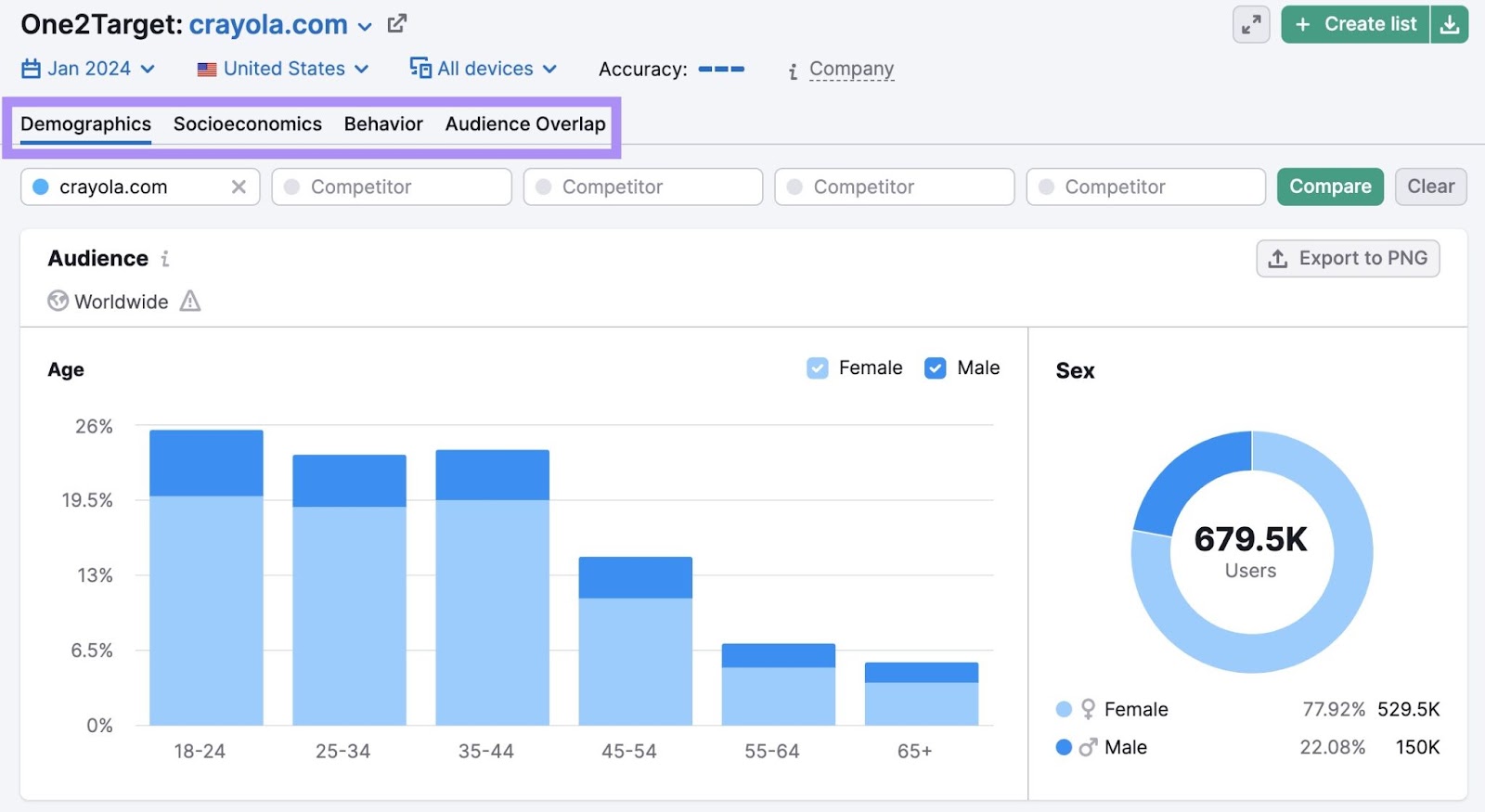
Using the menu at the top of the page, select “Behavior” to see when your competitor audiences are the most active on social media.

Scroll down to “Social Media.”
You’re probably best focusing on YouTube and Facebook if you’re selling children’s art supplies, but buyers are also active on Instagram and Reddit.
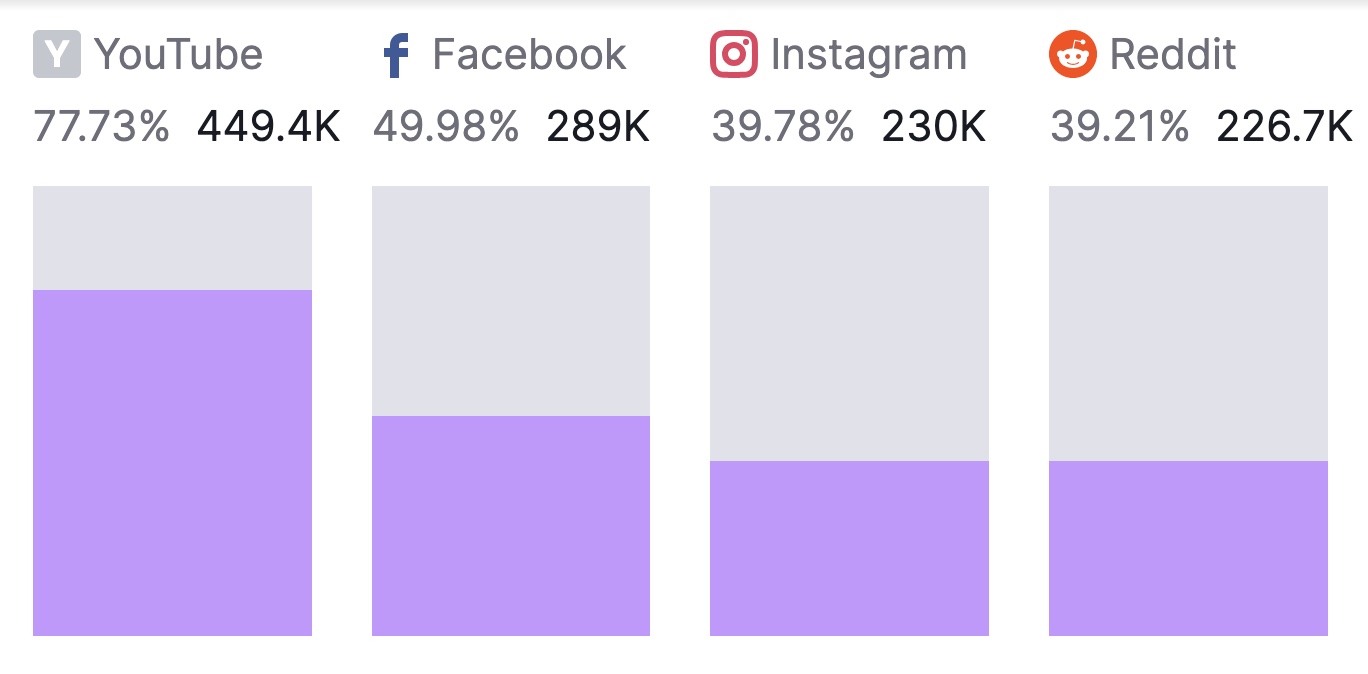
You might want to avoid TikTok and Twitter altogether, where less of your target market is active.
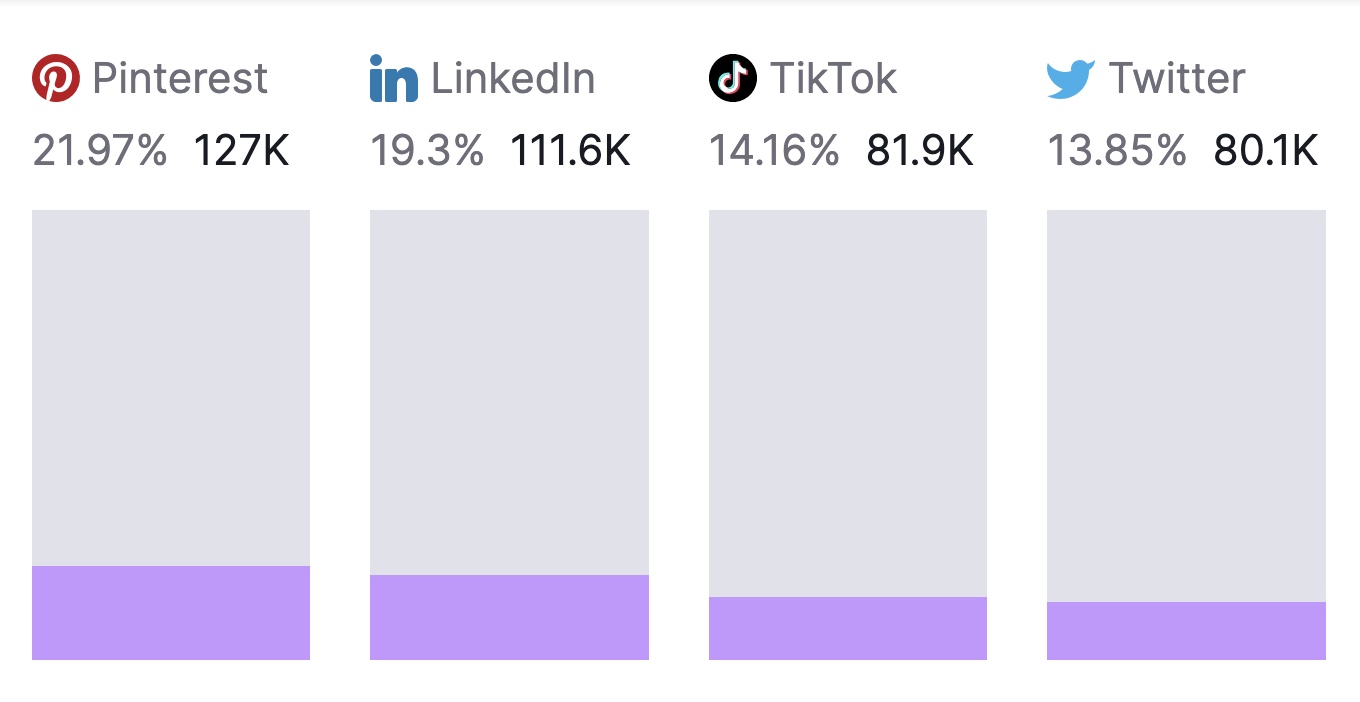
Focus on Personalization and Customer Engagement
Build a specific marketing strategy for each segment you think is most valuable for your product.
Personalizing your marketing campaigns to each of your target market segments may result in higher returns down the line. Research by McKinsey shows that:
[…] companies that excel at personalization generate 40 percent more revenue from those activities than average players.
Carry that personalized experience into your sales and support conversations. Up to 73% of consumers say they expect businesses to provide personalized engagements as technology continues to advance.
Further reading: Content Personalization: What It Is & How to Do It
How to Implement Targeted Marketing Campaigns
Once you craft your personalized messages and select your customer channels, it’s time to launch your campaigns to start reaching your audience and drive conversion.
Plan your content calendar based on topics your target market is most interested in. And measure your success with tools that track channel performance.
Planning and Execution
Brainstorm ideas to fuel your marketing plan using the information you gained from analyzing your target market. Here’s how to go about formulating and implementing your marketing strategy.
First off, the Topic Research tool is a great way to identify which topics will be the most engaging.
From your Semrush dashboard menu, click the “Content Marketing” drop-down and select “Topic Research.”
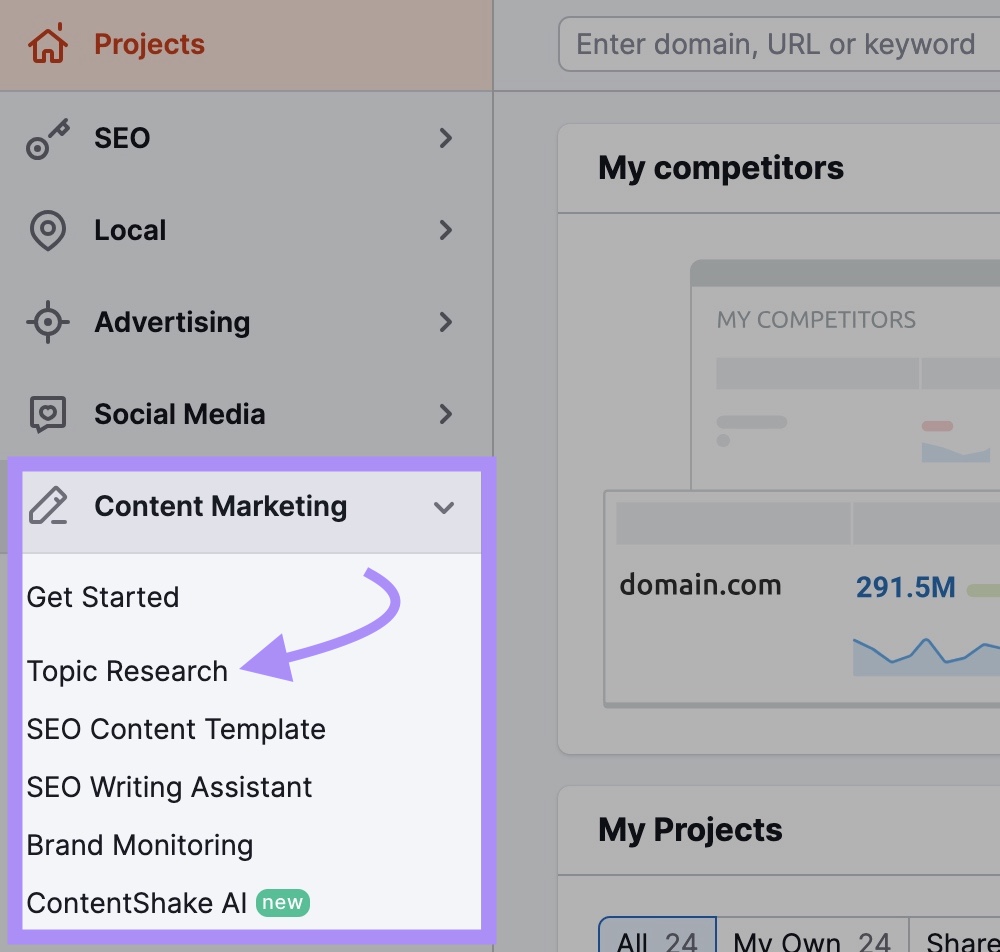
Enter a specific topic of choice in the tool. If you want to see what your competitors are talking about, select “+ Enter domain to find content on” and add a competitive domain to narrow your search. Then hit the “Get content ideas” button.
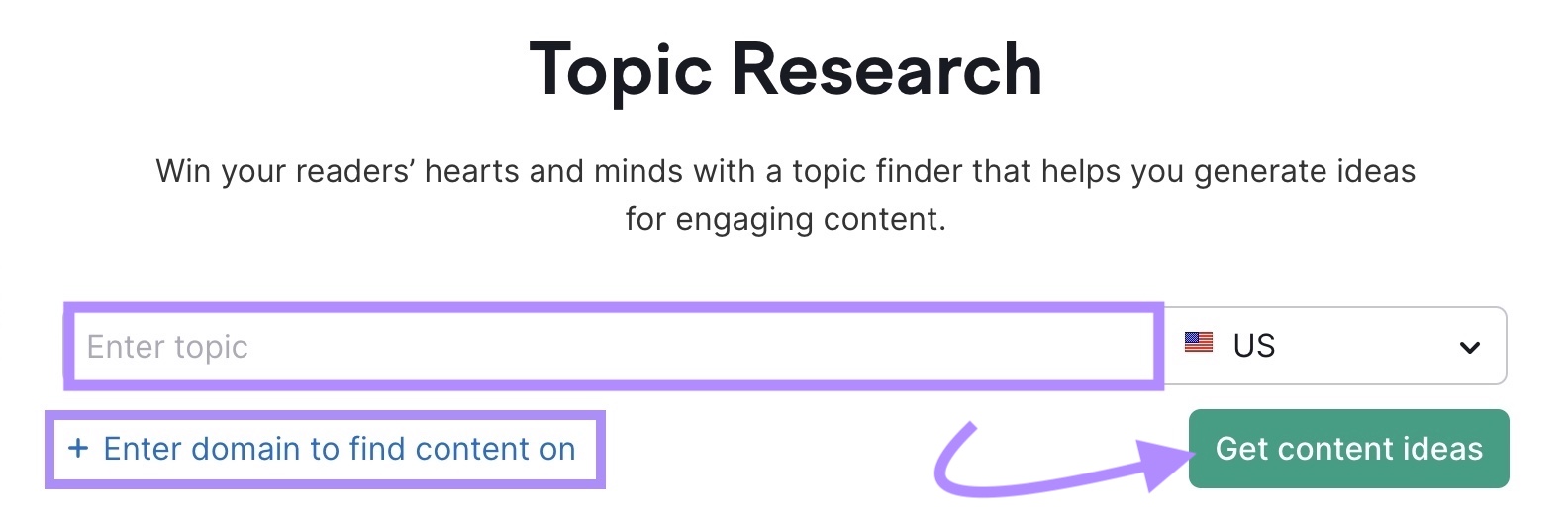
For now, we’ll just focus on a topic.
Let’s say you have a hunch that the architecture market might be interested in finding architects in their vicinity. Enter “architects near me” in the text box and click “Get content ideas.”
The results reveal cards on several other related topics. Like project management, home renovations, and the design process.
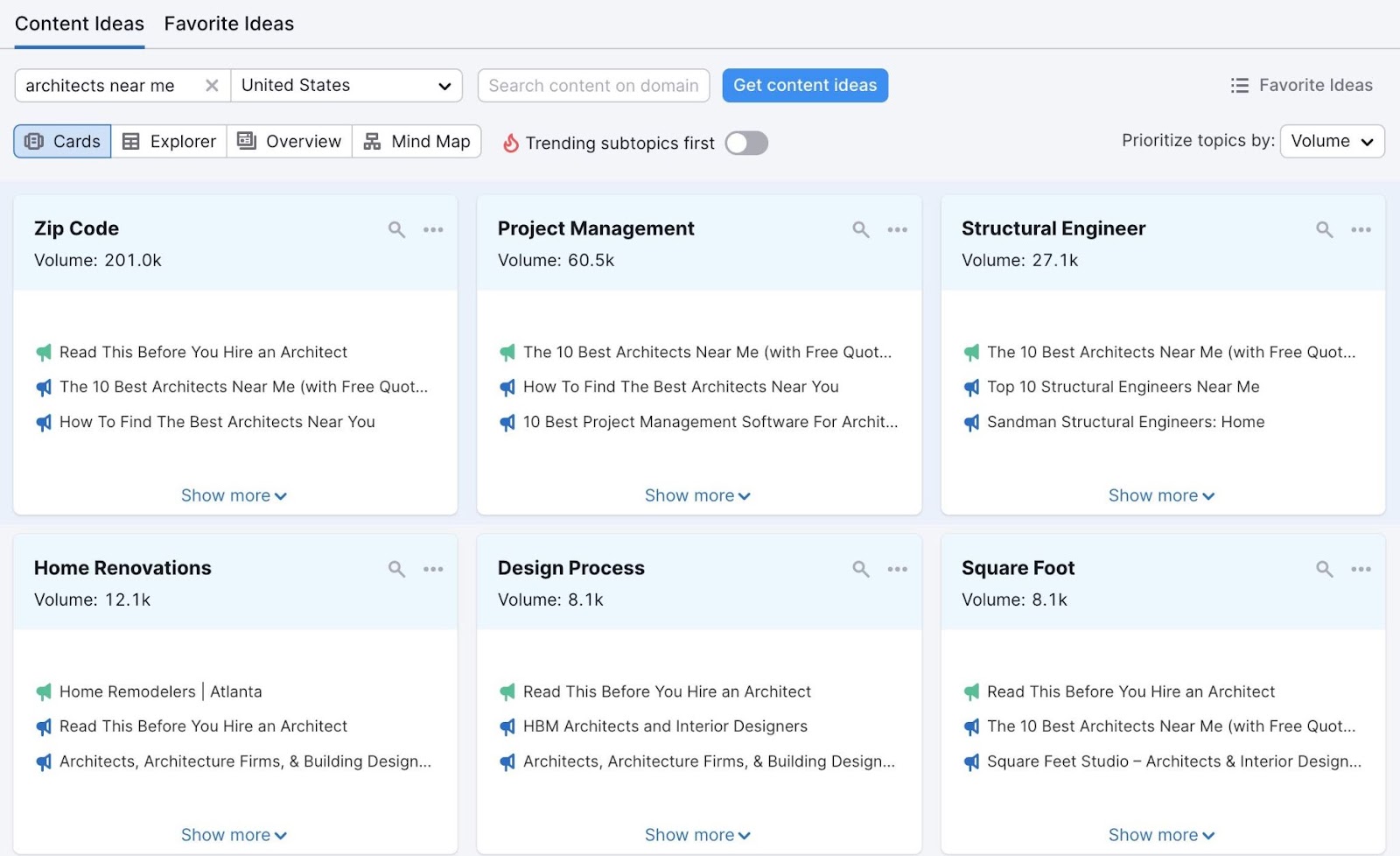
You might want to check out what a specific competitor is publishing on the subject of “design process.”
At the top of the page, change the topic to “design process” and enter “architecturaldesigns.com” in the “Search content on domain” box. Click “Get content ideas.”
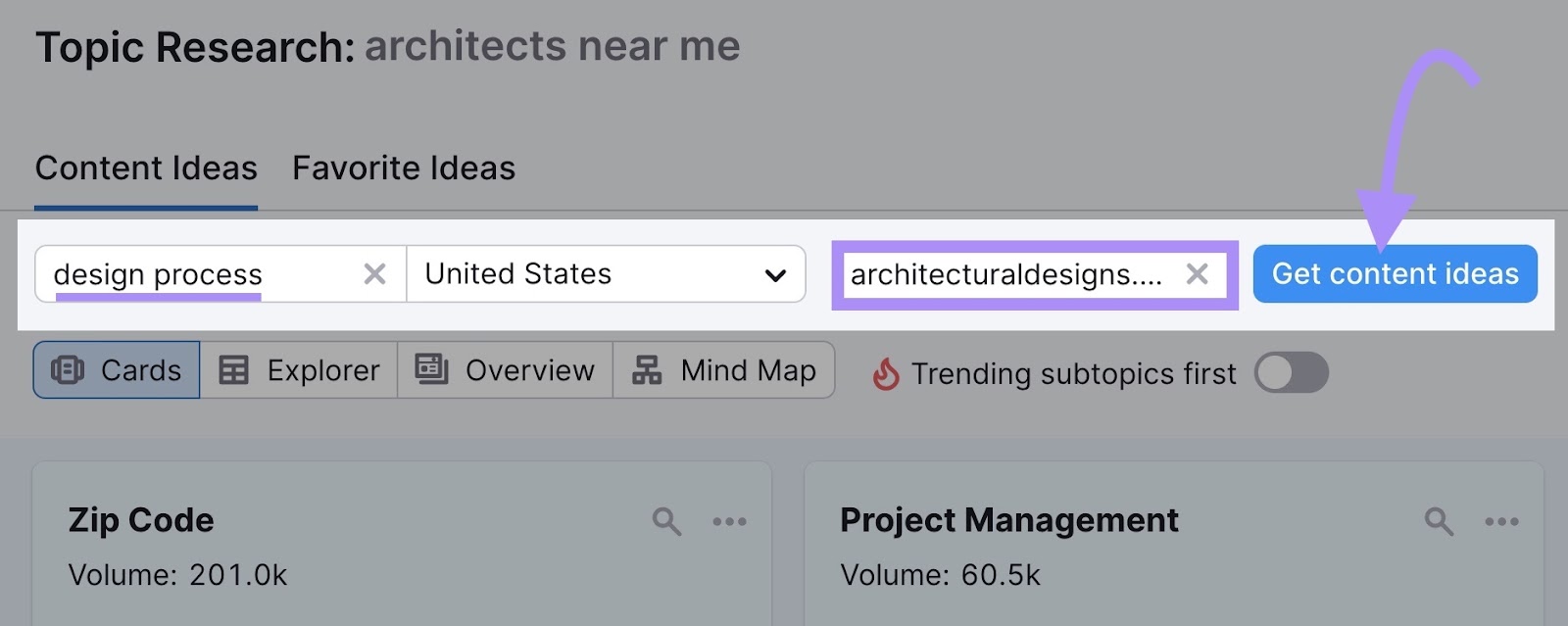
Popular discussion themes include UX design and user testing.
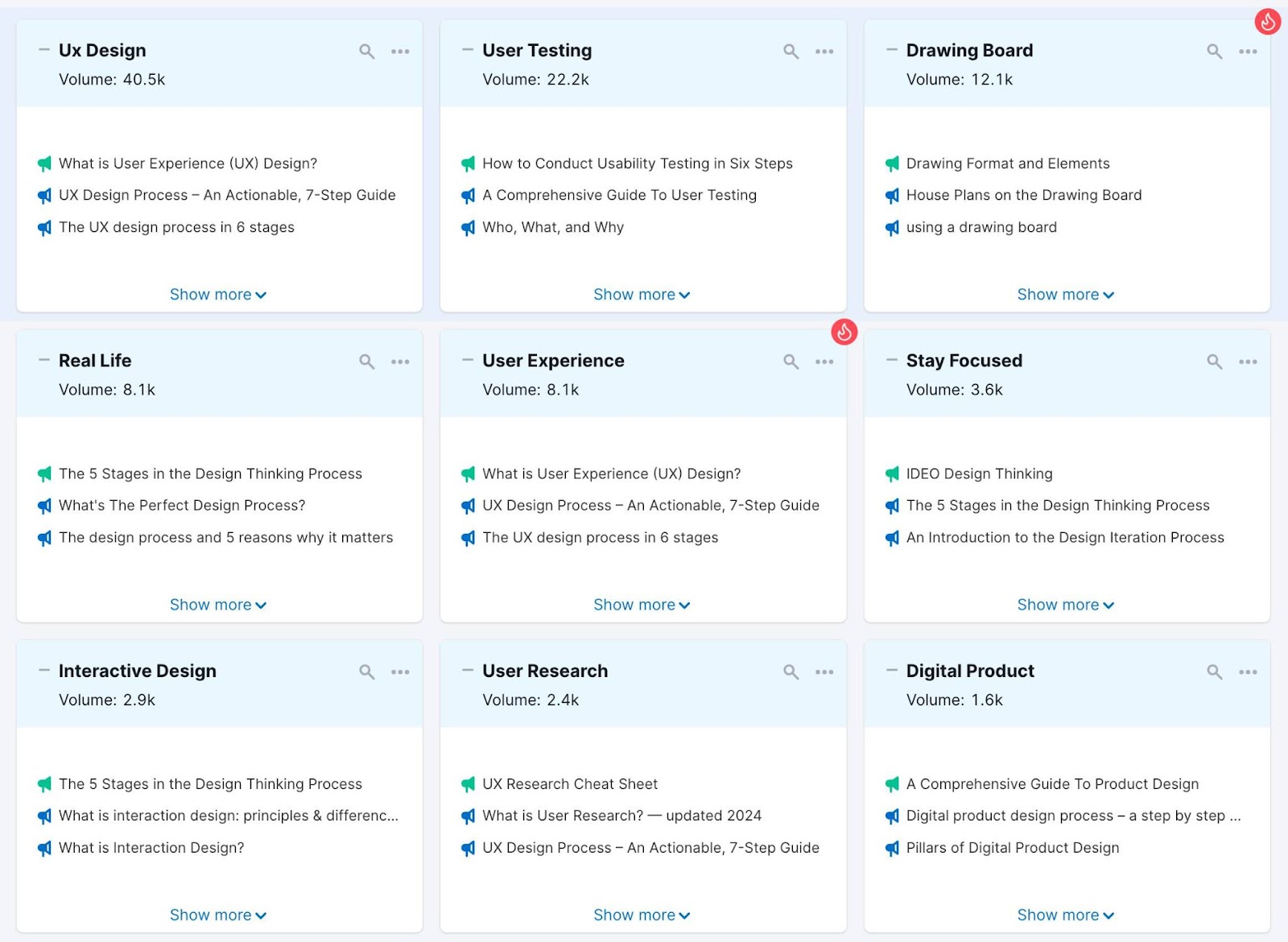
Click any topic for more details on search volume, keyword competitiveness (“Difficulty”), and questions your target market wants answers for.
Slot your ideas into a calendar, create and distribute content to get in front of your target audience, and start building traffic with the potential to convert.
Measuring Success and ROI
All the work you’ve done to gain and apply target market insights is only valuable if it moves the needle. Start with a simple, overall ROI calculation for each of your marketing channels—here’s how:

In conjunction, use tools to track and optimize each channel’s performance.
The Google Analytics platform gives you key insights into which channels contribute to your website traffic. And if organic search is a main focus, use Google Search Console and Semrush’s Position Tracking to measure how well you’re ranking for specific keywords.
Plus, you have the option to connect your Facebook, Instagram, and LinkedIn business channels to Semrush’s Social Analytics to track audience engagement and other metrics.
Common Challenges When Marketing to a Target Market
Reaching your target market isn’t always easy. If your marketing campaigns aren’t hitting the mark, try troubleshooting the following common challenges:
- You only researched your target market once. Consumer habits change, so build a process to check in on your target market regularly.
- Your target market is too broad. Segment your audience further for more effective messaging.
- Your content isn’t personalized. Create multiple marketing campaigns tailored to different target markets.
- Your target market doesn’t see your message. Try a new marketing channel if your message isn’t reaching the right people.
- You have the wrong message. Try testing your message by surveying your customer base before rolling out a new campaign.
Future Target Market Trends
Deeply understanding the people you want to reach will always remain a relevant best practice and a fundamental aspect of marketing. But future trends will change how marketers define and identify their market as customer needs and interests evolve.
Here are three target market trends worth keeping an eye on.
Ongoing Research
Target market research isn’t something you do only once. Markets and behaviors evolve rapidly—how successfully you stay on top of those changes can make or break your business.
Conducting regular and frequent target market research will become more common and necessary to help you adapt quickly. Whether that’s by using tools like Market Explorer or Consumer Surveys to promptly capture customer feedback.
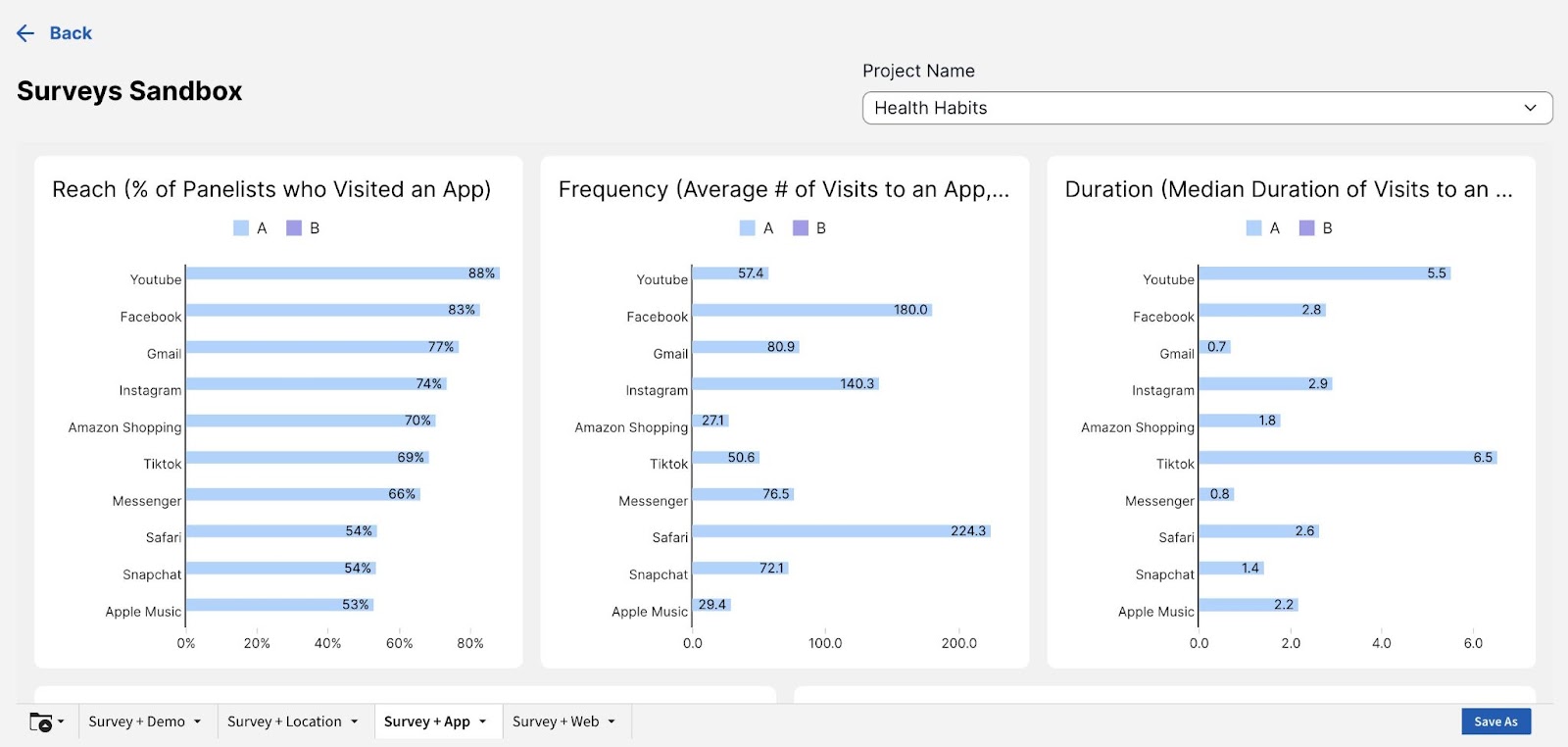
Ongoing research also involves adopting more tools for regular social listening and sentiment analysis to determine how people feel about your brand over time.
Digital Transformation
As companies continue to store more data digitally, analytics capabilities will become even more advanced and nuanced. Allowing businesses to accurately identify patterns and predict consumer behavior.
Let’s take an ecommerce company as an example. Sophisticated tools that collect and process relevant data more efficiently would allow the business to anticipate trends in online seasonal purchasing behavior.
Predictive Analytics and AI
Digital transformation will also help marketers automate the research process in conjunction with machine learning (ML) and artificial intelligence (AI). These technologies will make data collection and reporting more efficient and accurate.
For instance, AI could take that same ecommerce company’s data and analyze seasonal purchasing behavior by looking for patterns in location, demographics, or household income. Enabling the marketing team to produce more effective campaigns around the holidays.
Make Data-Driven Decisions for Effective Audience Targeting
Successfully defining your target market requires you to get specific. When you target everyone, you target no one. But researching your market’s preferences allows you to segment and tailor your strategy to impact the people who matter.
Market research tools, customer surveys, and data on search trends or social media signals can help you piece together the picture to make informed decisions for your business.
Analyze your target market for free today with a Semrush free trial, giving you access to 55+ tools.
Source link : Semrush.com
